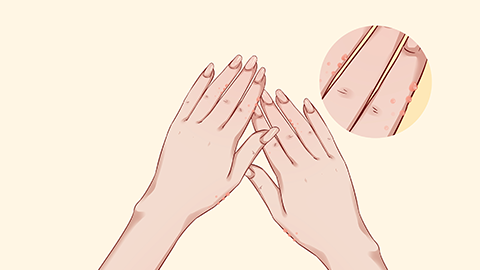What causes small blisters on the body and what should I do?
In general, small blisters on the skin may be caused by factors such as frictional irritation, excessive sweating, dyshidrotic eczema, herpes simplex, or herpes zoster. It is recommended to seek timely medical advice and undergo general treatments or medication therapy under a doctor's guidance. The specific causes are analyzed as follows:

1. Frictional Irritation
Prolonged and repeated friction on the skin, such as walking in ill-fitting shoes or frequently using tools during heavy manual labor, can separate the epidermis from the dermis, creating a space filled with tissue fluid, which leads to blister formation. In daily life, appropriate footwear and work tools should be selected to reduce unnecessary skin friction.
2. Excessive Sweating
In high-temperature environments or after strenuous exercise, the body sweats heavily. If sweat gland ducts become blocked, sweat cannot be excreted normally and accumulates under the skin forming small blisters. It is recommended to keep the skin clean and dry, promptly wipe off sweat, wear breathable and sweat-absorbing clothing, and avoid staying in high-temperature environments for prolonged periods.
3. Dyshidrotic Eczema
High levels of mental stress or allergen exposure in individuals with allergic constitutions may trigger dyshidrotic eczema. Its pathogenesis involves a skin allergic reaction causing localized inflammation of sweat gland ducts, leading to sweat retention and blister formation. Symptoms may also include itching and peeling. Treatment can involve topical application of calamine lotion, triamcinolone urea cream, loratadine tablets, and other medications as directed by a physician.
4. Herpes Simplex
Herpes simplex is primarily caused by infection with the herpes simplex virus. When the body's immunity decreases, the virus becomes active and multiplies extensively at the junction of skin and mucous membranes, such as around the lips and nostrils, damaging cells and forming blisters. Accompanying symptoms may include sensations of burning or pain. Patients can use acyclovir cream, valacyclovir tablets, famciclovir tablets, and other medications as advised by a doctor.
5. Herpes Zoster
Herpes zoster is caused by the reactivation of varicella-zoster virus. After a previous infection with chickenpox, the virus remains dormant in the sensory ganglia and becomes activated when immunity decreases. It travels along nerve fibers to the skin, causing skin inflammation in the affected nerve region, resulting in blisters and possibly significant nerve pain. Patients should follow medical advice to use medications such as acyclovir tablets, mecobalamin tablets, and gabapentin capsules to alleviate symptoms.
In daily life, it is important to avoid known allergens to reduce the risk of allergies, maintain regular作息, balanced nutrition, and enhance personal immunity. Pay attention to personal hygiene and avoid close contact with infected individuals.





